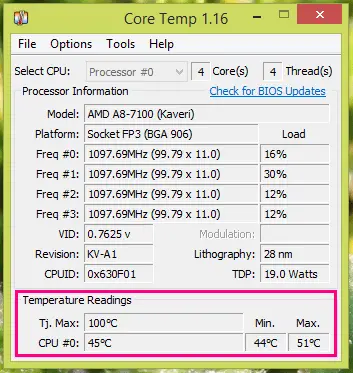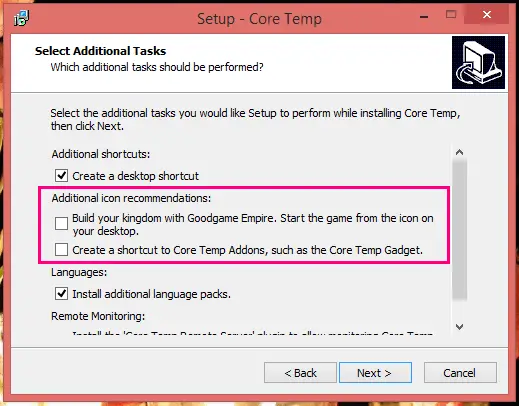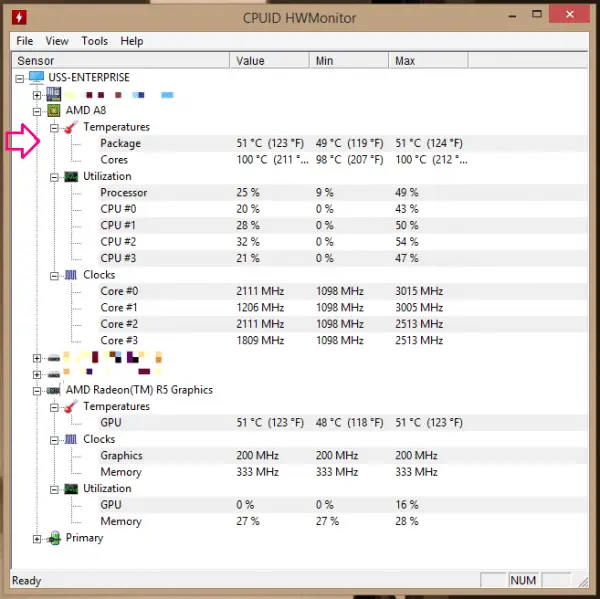A computer's processor, the CPU, should never get too hot because overheating can damage it. To prevent this from happening, you should monitor the CPU temperature. In this article, you will learn how to use external software to read the temperature of your CPU and other hardware.
Determine CPU temperature with software
There are different types of software that you can use to find out and monitor the temperature of your CPU. The programs access sensors in the processor and output their information. CPU manufacturers such as Intel or AMD often offer their own software for this, but there are also free and manufacturer-independent programs. We present two of them here:
Core Temp: Clear and with brief instructions
The Core Temp software determines, among other things, the temperature of the CPU of your PC. When you open the software, you will see the determined data about your processor. There are several temperature values under "Temperature Readings". These are broken down for each individual core of your CPU into the current temperature as well as the highest and lowest temperature of a measurement interval. If you wish, a text file with a quick guide for Core Temp will open immediately after the installation.
 Under "Temperature Readings", Core Temp shows the current temperature of the CPU cores, as well as the highest and lowest temperatures measured in an interval.
Under "Temperature Readings", Core Temp shows the current temperature of the CPU cores, as well as the highest and lowest temperatures measured in an interval.
Warning: Core Temp wants to install adware (advertising software) on your PC during installation. You can prevent this by unchecking "Additional icon recommendations" during the installation process..
 Beware of adware: To prevent this from being installed, you should remove the check mark next to "Additional icon recommendations".
Beware of adware: To prevent this from being installed, you should remove the check mark next to "Additional icon recommendations". HWMonitor: Read out further temperatures
An alternative program that you can use to monitor the temperature of your hardware is HWMonitor. You can find the values for the CPU of your processor under "Temperatures". HWMonitor also shows you, for example, the temperature and utilization of your graphics card. If your motherboard also has temperature sensors, you can also monitor their temperatures in the HWMonitor. This is how you can tell whether there is a problem with the fan on your PC.
 With the HWMonitor software, you can read out not only the temperature of your CPU, but also, for example, that of the graphics card (GPU).
With the HWMonitor software, you can read out not only the temperature of your CPU, but also, for example, that of the graphics card (GPU). CPU: This temperature is too hot
The normal operating temperature of a CPU and what the maximum temperature is depends on the manufacturer and model. Usually, the operating temperature of a processor between 40 and 70 ° C . In exceptional cases it can be over 90 ° C , but you should avoid that. If you often observe such excessive temperatures, you should check the ventilation of your PC and replace it if necessary. Otherwise the service life of your CPU will be reduced..
Basically, however: Modern CPUs monitor their temperature themselves. If this becomes too high, the CPU throttles its performance more and more. In an emergency, it switches itself off to avoid damage - the PC crashes. If the CPU is overclocked by the user for better performance, and if the CPU's protection mechanisms are tampered with, it is more likely that the CPU will be damaged.